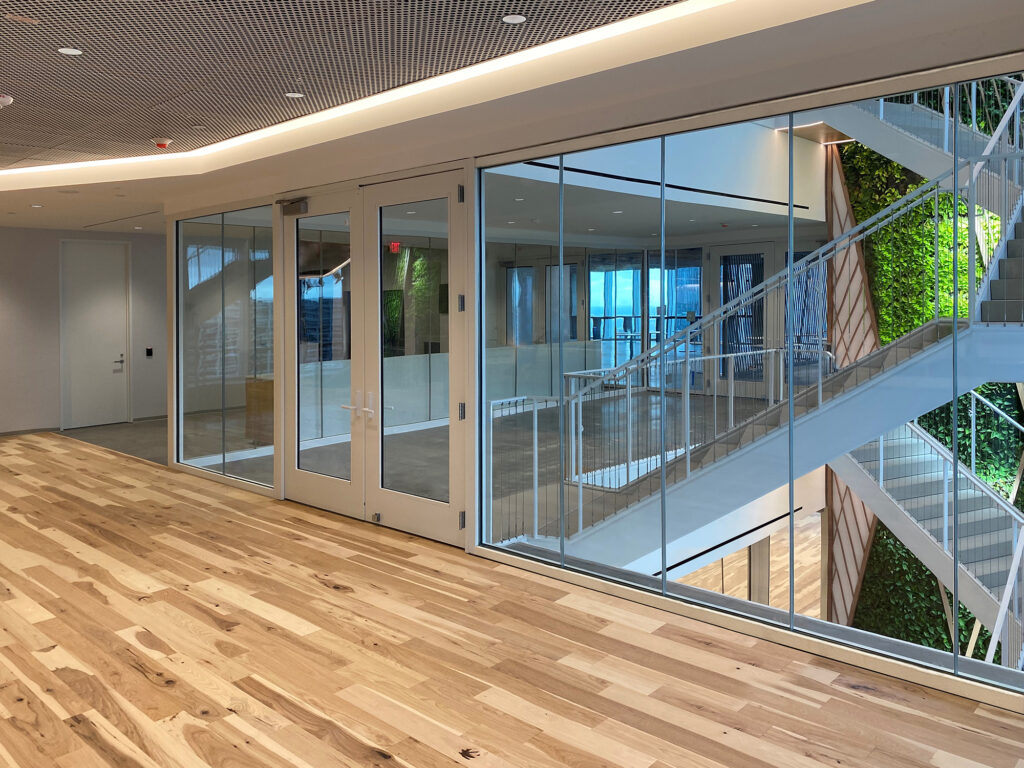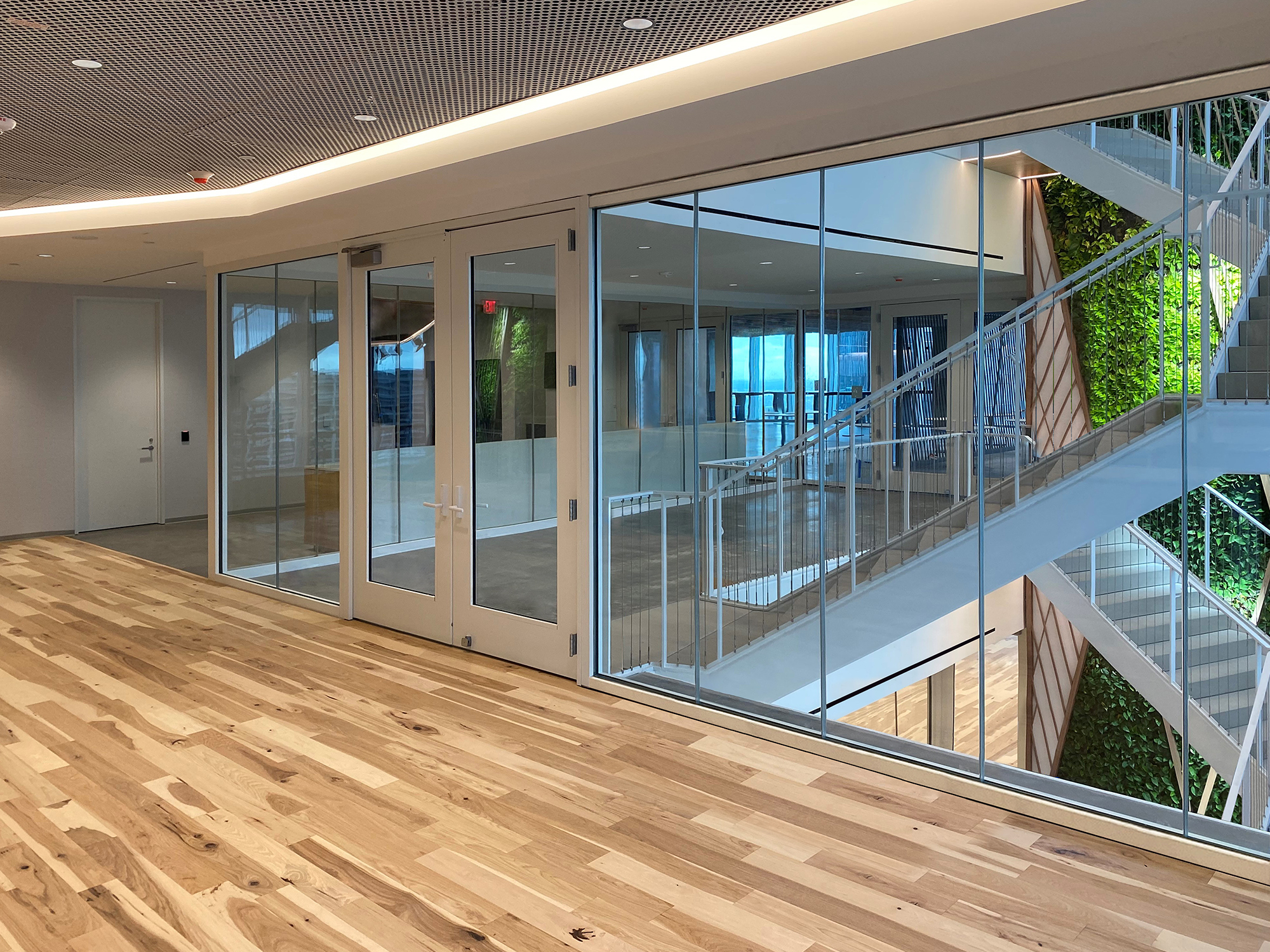Best Practices for Using Fire Rated Glass in Commercial Buildings


People all around the globe have seen the destruction that a fire event leaves in its wake. To ensure everyone’s safety and keep damage to a minimum, governments and various organizations have created fire safety protocols and guidelines that buildings must comply with, whether for residential or commercial use.
Because of this, the fire rated glass market is expected to see continuous growth in the coming years as fire safety remains a top priority in buildings. Innovations have turned fire-resistant glass and glazing into viable options for projects that require both fire safety and aesthetic appeal. That’s why more and more commercial buildings have sought this type of glass to adorn their doors and walls, both interior and exterior.
Its modern-day design and safety benefits have led buildings to adopt this type of glass in their fire safety strategy. However, this type of glass must be handled with utmost care and attention following best practices.
4 Best Practices for Using Fire Rated Glass in Commercial Buildings
-
Check to make sure that the fire rated glass & framing used in 1-2 assemblies has been tested to the same standard.
Using fire rated glass for your buildings and structures has many benefits. Not only does it let you have freedom and incite creativity with your designs but also gives your building protection from hostile fire accidents.
However, specifications for this glass type must be followed, as the type of fire-resistant glass can affect performance during a fire. The supporting components of the glass must also be fire rated to achieve maximum performance. This means the framings, fixings, glazing seals, and beads should all be compatible and tested for fire resistance standards.
As a general rule, both glass and framing system must be tested to the same standard. For example, fire resistive glass must be used in fire resistive framing. Using fire protective framing with fire resistive glazing lowers the assembly rating to fire protective – which compromises the system’s performance or code acceptance.
-
Only use fire rated glass that has been thoroughly tested
To make sure your glass is fire rated and what its fire rating is, check the glass for markings that indicate the type of glass you are using.
Read: New Marks for Fire Rated Glazing Assemblies
Aside from that, it is recommended to look for appropriate test data and evidence from the manufacturer before moving on to the construction and installation. The test reports for fire-resistant glazing systems must come from an approved and accredited test laboratory.
Moreover, test reports must be relevant to the type and application of the glazing system under consideration. With this, if the test for your glass is approved for a specific glazing system, this test report cannot back up the use for another type of glazing system.
Note, too, that substituting components for convenience or lower costs may compromise the performance of the glass.
-
Always follow the manufacturer’s product handling and installation instructions
Before doing any installation, it’s best to read the instructions thoroughly and identify the processes you’ll undertake for the installation plan. This will help you in gathering the necessary materials on the day of the installation. You also need to note storage and handling instructions for these types of glazing products to keep them from getting damaged.
On another note, skipping steps in assembling the fire rated glazing system can lead to problems down the line. Doing so can result in you undoing your work and doing it again in the proper order. If you plan to execute workarounds, it’s better to consult with the manufacturer of your fire rated glazing as to what you can and cannot do.
Fire rated glazing systems are special high-performance products, and because of this, you cannot just do workarounds as you would with a traditional glazing installation. Although successful in traditional settings, these workarounds may cause failure later on.
Besides that, reading the instructions can help identify the site-specific conditions or standards of your building that may pose problems during the installation process.
-
Know the difference between fire protective and fire resistive
Fire rated glass has different specifications and types, which is why it’s best to know your project requirements. Knowing this will make it easier for you to identify what materials or components you have to gather. Moreover, certain building codes denote what type of glass can only be installed in specific areas.
-
Fire protective
Typically tested to NFPA 252, NFPA 257, UL 9 or UL 10C, this type of fire rated glass can prevent smoke from spreading and the passage of flames to the unexposed side of the glass. However, installing this type of glass cannot exceed 25% of the wall area since this cannot control the transfer of radiant heat. This means those on the other side can still feel the heat even though the fire and smoke are contained on one side of the glass.
Since these are used for opening protectives—or protection for passageways from smoke or flames—indicated in the building code, they are usually seen in interior openings and doors of up to 45 minutes.
-
Fire resistive
Typically tested to ASTM E-119 or UL 263, aside from preventing the spread of smoke and flames, this type of fire rated glass also prevents dangerous levels of radiant heat from going to the unexposed side of the glass and stops objects from combusting. Because of this, they can be used for wall and door applications 60 minutes and above without being subjected to the same 25% limit of fire protective glass.
With this feature, building codes that indicate an area needing fire-resistive assemblies use this type of fire rated glass. This denotes that the other side of the glass must be kept at a low temperature below a certain threshold—limited to 250°F over ambient on the non-fire side.
-
Fight Fire with Glass
Fire rated glass has become one of the most popular specialty building materials used in buildings worldwide. With governments imposing fire safety regulations to keep citizens safe, this type of glass enables designers to freely express their creativity while keeping the building safe from fire events. However, fire rated glass is a highly specialized product that needs to be handled with care.
The most important thing to note when it comes to this type of glass is compatibility. All comes to moot if the glazing elements are not compatible as a whole and do not meet your building’s codes for fire safety. That’s why it’s best to know what type of glass you need beforehand and check their test performances to find the right glass for your setup.
If you’re looking for top-quality fire rated glass, SAFTI FIRST is a manufacturer of USA-made fire-rate solutions that can improve your building’s fire safety with style and sustainability. Contact us today to learn how our fire rated solutions can get you the best of both worlds.